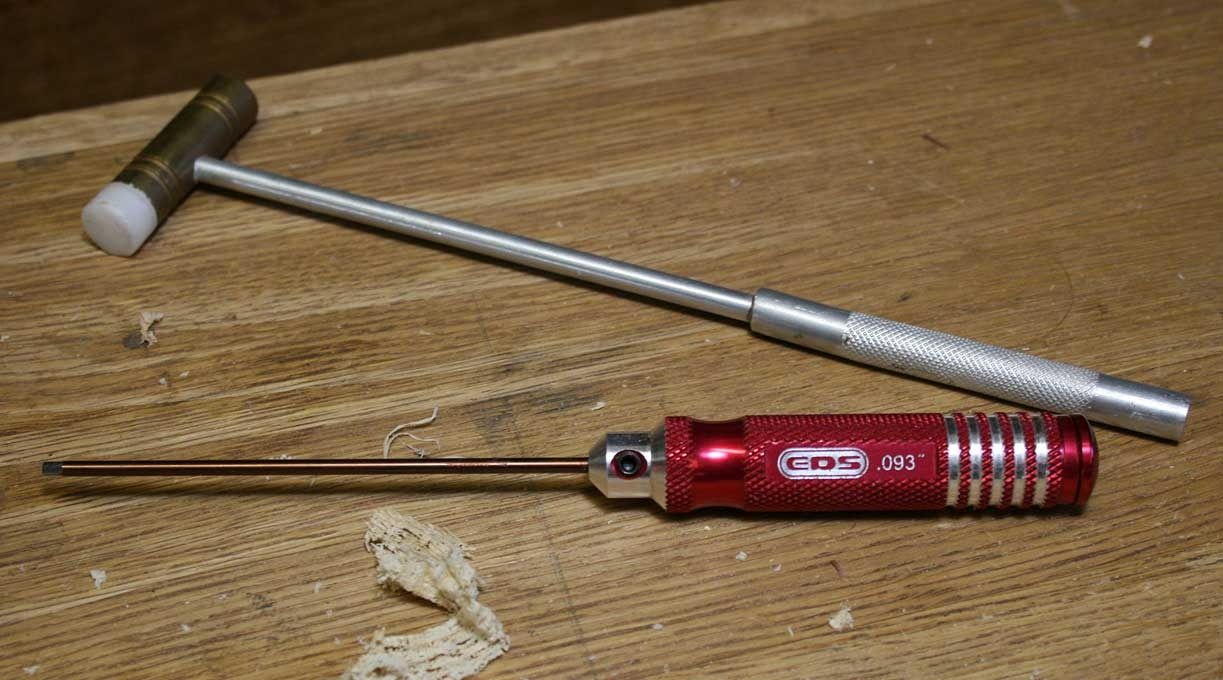Cheshirechappie
Established Member
A recent question about gauges ( marking-gauges-suggestions-t105009.html ) prompted a bit of discussion about gauging technique and gauge types, and somebody (well, alright - me!) opined that that they didn't get on with wheel gauges. That's on the basis of ownership and use of a sum total of one example, so it may not be typical!
However, here's what I don't like.
1) The little screw holding the marking wheel keeps coming loose, leading to a wobbly wheel. Not an aid to accuracy, that.
2) The head has a little O-ring in it to grip the shaft, and stop it falling off. This makes fine adjustment a real faff. You tap the end of the stem on the bench, whereupon the O-ring deforms a bit, and then bounces back. You do the same again, a bit harder, and it jumps 1/16". You turn the gauge round, and tap the other end of the stem - ditto repeato. Etcetera.
3) There's not much to get hold of - not like a nice, hand-sized wooden one, anyway. That leads to something mighty like finger cramps, and a slight loss of the delicacy of touch marking out sometimes needs.
4) Been mentioned before by others, this one; it's not easy to work up to a line with a wheel gauge, so things like marking hinge sinkings is trickier than it could be.
Well - it seems at least one other person on the planet has some sympathy with my view. This video is a bit long and rambling - well, OK, it's a LOT long and rambling - but it does make some reasonable points.
https://www.youtube.com/watch?v=1HgRtpwozIM
On the basis of my experience, if any other wheel gauge somehow mistakenly found it's way into the CC Towers workshop, it is quite likely to exit again mucho pronto, on an approximately parabolic trajectory, followed by a stream of terrible Anglo-Saxon curses.
****Rant Mode Off***
Phew. Feel better now...
Alright - so that was a little bit exaggerated for dramatic effect, but the core point stands - I prefer the older style of gauge. They're usually of wood, but some examples in metal are about. They're easier to set, nicer to hold, and the wheels don't fall off because they haven't got any.
Now, I fully accept that others have used wheel gauges happily and like them. Fine - each to their own. However, I wonder if it's worth giving the old sort a thought; after all, the materials to make a boxful of wooden-bodied gauges cost less than one new decent quality wheel gauge, and home-made can always be modified and adapted to solve a particular problem.
Wheel gauges have been around for decades (the Melhuish catalogue of 1927 on the Toolemera website lists one, for example), but craftsmen of old didn't seem take to them, given that they rarely crop up as 'vintage'.
So with Rant Mode on again - and do bear in mind this is intended to be light-hearted and a bit tongue-in-cheek - are fancy wheel gauges more a modern fashion statement than a pragmatic and effective solution to a marking-out problem?
However, here's what I don't like.
1) The little screw holding the marking wheel keeps coming loose, leading to a wobbly wheel. Not an aid to accuracy, that.
2) The head has a little O-ring in it to grip the shaft, and stop it falling off. This makes fine adjustment a real faff. You tap the end of the stem on the bench, whereupon the O-ring deforms a bit, and then bounces back. You do the same again, a bit harder, and it jumps 1/16". You turn the gauge round, and tap the other end of the stem - ditto repeato. Etcetera.
3) There's not much to get hold of - not like a nice, hand-sized wooden one, anyway. That leads to something mighty like finger cramps, and a slight loss of the delicacy of touch marking out sometimes needs.
4) Been mentioned before by others, this one; it's not easy to work up to a line with a wheel gauge, so things like marking hinge sinkings is trickier than it could be.
Well - it seems at least one other person on the planet has some sympathy with my view. This video is a bit long and rambling - well, OK, it's a LOT long and rambling - but it does make some reasonable points.
https://www.youtube.com/watch?v=1HgRtpwozIM
On the basis of my experience, if any other wheel gauge somehow mistakenly found it's way into the CC Towers workshop, it is quite likely to exit again mucho pronto, on an approximately parabolic trajectory, followed by a stream of terrible Anglo-Saxon curses.
****Rant Mode Off***
Phew. Feel better now...
Alright - so that was a little bit exaggerated for dramatic effect, but the core point stands - I prefer the older style of gauge. They're usually of wood, but some examples in metal are about. They're easier to set, nicer to hold, and the wheels don't fall off because they haven't got any.
Now, I fully accept that others have used wheel gauges happily and like them. Fine - each to their own. However, I wonder if it's worth giving the old sort a thought; after all, the materials to make a boxful of wooden-bodied gauges cost less than one new decent quality wheel gauge, and home-made can always be modified and adapted to solve a particular problem.
Wheel gauges have been around for decades (the Melhuish catalogue of 1927 on the Toolemera website lists one, for example), but craftsmen of old didn't seem take to them, given that they rarely crop up as 'vintage'.
So with Rant Mode on again - and do bear in mind this is intended to be light-hearted and a bit tongue-in-cheek - are fancy wheel gauges more a modern fashion statement than a pragmatic and effective solution to a marking-out problem?

































